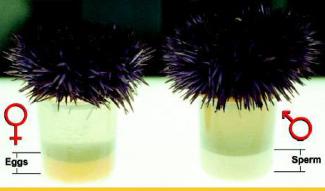Along Maja Smrekar's workshop on reproduction and inter_specie companion we witnessed the reproductive process of sea urchins and we were introduced to the distinction between fertilization, in vitro fertilization and cloning.
All mammals produce gametes. Since sea urchin’s eggs and sperm are similar to our own and their embryos are easy to observe, these animals have been studied since the 19th century as model organisms in developmental biology.
Sea urchin eggs and sperm provide a model embryo for understanding development that apply to all organisms from jelly fish to humans and can also serve as indicator organisms in environmental studies. eg. testing for the presence of water pollution by environmental agencies
During the workshop, we fertilized several small batches of sea urchin eggs through laboratory protocols and observed a few steps in their fertilization under a microscope. During the time gaps between different stages of urchin fertilization we accompanied the workshop with lectures.
Our workshop served as a model reference to define the difference between fertilization, in vitro fertilization and cloning. A juxtaposed reference has been Maja Smrekar’s project “K-9_topology: ARTE_mis” (2017), within which she and her collaborators performed in vitro situation for one of the reproductive cells to be substituted by a non-human somatic in order to produce a hybrid cell, preserved in a frozen state as a molecular sculpture.

